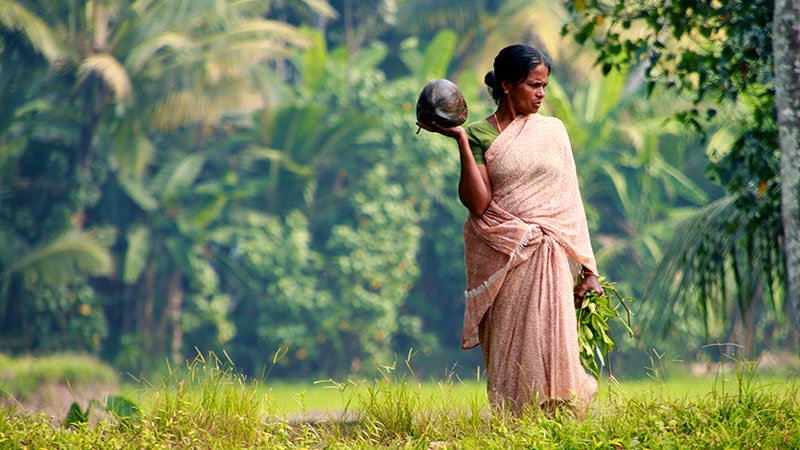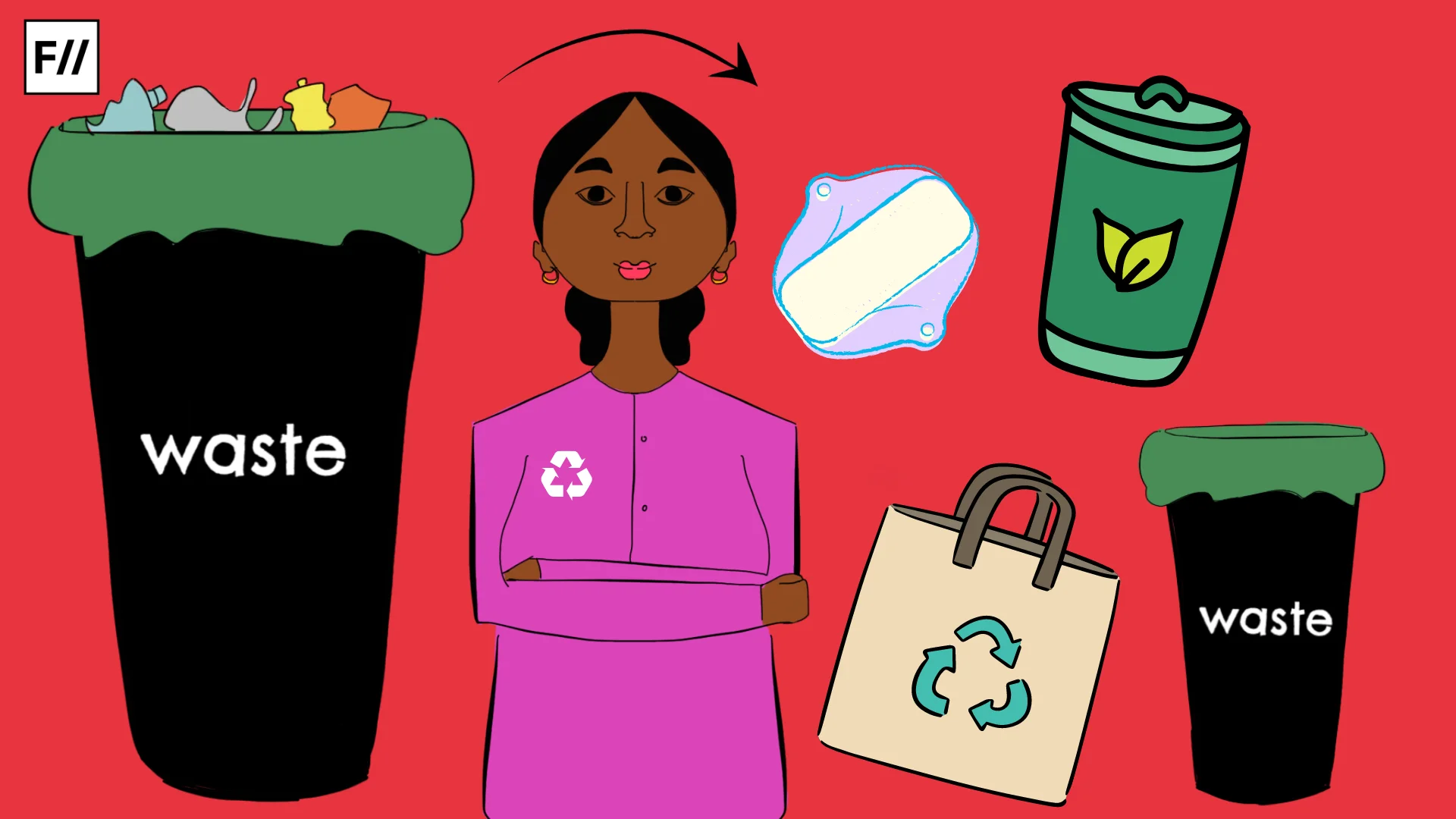 Editor’s note: Approx 125kg of sanitary waste is generated per person during their menstruating years and these sanitary napkins can take 500-800 years to break down! #ThePadEffect is a campaign to advocate for sustainable menstruation and prevent thousands of tons of sanitary waste.
Editor’s note: Approx 125kg of sanitary waste is generated per person during their menstruating years and these sanitary napkins can take 500-800 years to break down! #ThePadEffect is a campaign to advocate for sustainable menstruation and prevent thousands of tons of sanitary waste.Posted by Mayuri Bhattacharjee
Swachh Bharat Mission (SBM) is the most talked about government programme in India at present. We know that one of the main goals of SBM is to achieve an open defecation-free India by 2019. We also see a lot of Swachh Bharat activities in the form of cleanliness drives and celebrities picking up brooms to clean up their mohallas.
But do we expect ‘menstruation’ to be a part of this programme? No, right? But menstruation and Menstrual Hygiene Management (MHM) is tucked neatly in the Swachh Bharat Mission Guidelines.
Swachh Bharat Mission Guidelines
Point 5.9.2 of the Swachh Bharat Mission Guidelines states, “Issues relating to women’s personal hygiene namely menstrual hygiene are to be focussed under the SBM (Gramin). Girls and women have hygiene and sanitation needs linked to their menstrual cycle. Women suffer in the absence of knowledge about safe practices on Menstrual Hygiene Management (MHM).”
The Guidelines make provision for funds available to conduct IEC (Information, Education and Communication) activities to raise awareness among all stakeholders about menstrual hygiene.
When it comes to dealing with menstrual waste, these Guidelines give this solution: “Funds allocated for Solid and Liquid Waste Management may be used to implement safe disposal solutions for menstrual waste (used sanitary cloths and pads) and setting up incinerators in Schools, Women’s Community Sanitary Complexes, Primary Health Centre, or in any other suitable place in village and collection mechanisms etc can be taken up. Technologies may include appropriate options that are socially acceptable and environmentally safe.”
Apart from Swachh Bharat Mission Guidelines, the Menstrual Hygiene Management Guidelines issued in 2015 by the Ministry of Drinking Water and Sanitation (the nodal ministry in charge of SBM) talks about various means of on-site disposal of menstrual waste which includes deep burial, composting, pit burning and incineration. Apart from composting (which is possible only in case of biodegradable pads or cloth), the other methods do not sound like a long term solution.
At present incineration is seen as a more viable option by the government, but it has its problems. In 2012, the state government of Kerala, on the recommendation of the findings of its technological committee, banned installation of mini incinerators as “They were of single chamber working in low temperature and not complying with CPCB norms.”
The WHO recommends incinerating all health-related waste only at temperatures over 800 degrees, for when plastic polymer products, such as disposable pads, are burned at lower temperatures as they typically release asphyxiant and irritant gases into the atmosphere. But even then there are questions whether incineration of sanitary napkins is the way to go.
There has been a call from environment activists to declare sanitary waste as bio-medical waste, which is then incinerated in registered and approved centralized incinerators. Municipal governments are not keen on this solution given the sheer amount of menstrual hygiene waste that is generated and also the costs involved to incinerate one sanitary napkin.
Hello, Swachh Bharat Mission! Meet Sustainable Menstruation
Since 2010, the Government of India under National Rural Health Mission’ (NRHM) has been supplying sanitary napkins under brand-name, ‘Freedays’, which are being sold to adolescents girls at the rate of INR 6 per pack of six napkins by Accredited Social Health Activists (ASHAs). Commercial pads by MNCs have also made inroads even into rural India. The relative of ease of sanitary napkins and the aspirational advertisements has resulted in an increasing consumer base in rural India apart from that in urban India. I have met women in villages who boast about using the ‘wing-wala napkins’ instead of the ‘old-fashioned’ cloth.
Single use and disposable products represent approximately 125kg of sanitary waste generated per person during the menstruating years. Menstrual waste from commercial sanitary napkins is the newest problem child in the WASH (Water, Sanitation and Hygiene) sector and at present, our cities and villages are grossly ill-equipped to deal with it in a sustainable way.
Suggestions for Swachh Bharat Mission
So, how can Swachh Bharat Mission achieve its goal of a clean India when a huge problem like this is sitting in front of its nose? I think it can and it’s not too late.
- Talk menstruation without shame: First of all, the local self-governments have to be comfortable about talking menstruation. Most of these institutions are led by men and talking about menstruation is still a taboo. We have to talk about menstruation freely to solve the problem of menstrual waste. Period.
- Introduce the concept of sustainable menstruation: Secondly, during the menstrual hygiene session conducted through government funds, the knowledge about sustainable options such as cloth pads and menstrual cups should also be imparted.
- Encourage entrepreneurs: Thirdly, encourage grassroots entrepreneurs who are producing biodegradable sanitary pads or cloth pads to ensure a steady supply. Such entrepreneurs don’t have the means to broadcast a glamourous commercial on primetime television, so the government can support them with marketing and distribution.
These are a few initial steps the government can easily undertake under various existing programmes.
The programme period of Swachh Bharat Mission will end in 2019, but every used pad which reaches the landfill today will stay for 500-800 years till it breaks down. We have to give up myopic planning and think in terms of decades.
So, what are we waiting for? Engage with your local government and talk about sustainable menstruation today!
Mayuri Bhattacharjee is the Programme Head and Director of Sikun Relief Foundation which works in northeast India on menstrual hygiene and WASH projects.
Featured Image Credit: Flickr user Pepe Pont
About the author(s)
Guest Writers are writers who occasionally write on FII.





This issue certainly is a Miss in Most WASH programmes. Perhaps an idea to turn to menstrual cup, More environment friendly, while the land is relatively virgin.